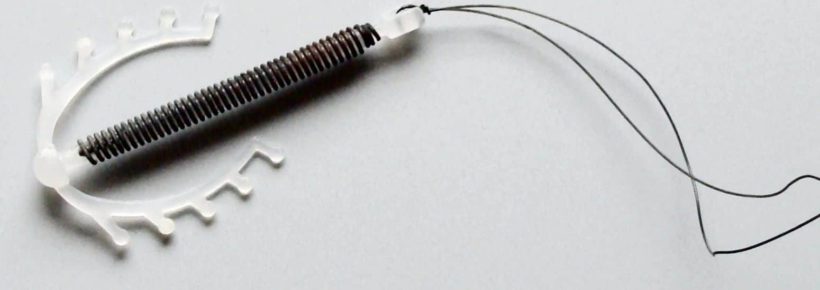Since the Supreme Court ruled on the legalization of birth control, millions of women—often oblivious to its dangers—have used one of its many forms. Manufacturers make billions off a woman’s desire to have sex with little to no consequences. While the pill is the most popular type, other methods continually entice women. Birth control implants are one such method.
A birth control implant is a device, about the size of a matchstick, used to prevent or impede pregnancy. A doctor inserts this device just under the skin of a woman’s inner upper arm. Usually containing levonogestrel, the implant releases this chemical into the woman’s body daily for years at a time.
Birth control implants are marketed as an easy solution to the “problem” of fertility. Women can have them inserted and then forget about them. This eliminates forgetfulness or user error. And it increases efficacy. But these implants have had a far-from-smooth introduction into the market. In addition, they do not prevent against STDs.
It all began with a device called Norplant. Norplant was first developed and approved abroad in the 1980s. But it wasn’t until 1990 that the FDA approved its use in America. Norplant was made of silicone and contained six capsules containing levonorgestrel. It was effective for up to five years.
Soon after Norplant was introduced, women found themselves facing health crises.
Side Effects of Norplant
Almost immediately, women began experiencing terrible side effects. These included:
- severe headaches
- anxiety and panic attacks
- depression
- acne
- weight gain of 60 to 100 pounds
- excess growth or loss of hair
- ovarian cysts
- breast pain
- skin discoloration
- infection at the implant site or numbness in the arm
- a variety of menstrual disorders
These side effects were so harmful that over 36,000 women joined a class action lawsuit against American Home Products Corporation, the parent company of the maker of Norplant. The plaintiffs claimed that the company “misled customers about the severity of Norplant’s side effects.” In 1999, American Home settled without admitting any wrongdoing. The company agreed to pay more than $50 million total. The settlement gave each woman slightly under $1,500.
According to a lawyer for the women who sued the manufacturer, the most severe side effects that he knew of were “enlarged ovaries and fallopian tubes that burst, causing the need for hysterectomies and/or the removal of the tubes and ovaries.”
Following the class action lawsuit and public outcry, the distributor withdrew Norplant from the US market in 2002. Its production was discontinued worldwide in 2008.
But like a phoenix rising after its death, birth control implants would not stay dead long.
In came Jadelle—an FDA-approved implant that is only marketed overseas.
Jadelle
While Norplant had 6 matchstick-sized implants, Jadelle is a set of two. Each contains 75 mg of levonorgestrel.
Like Norplant, a doctor must insert the rods—one at a time—into the woman’s arm. The doctor uses a local anesthetic and makes the incision. Often, swelling, bruising, or discoloration result at the site. Some women report pain or itching. In addition, some women have had skin reactions such as blistering, tingling, numbness, or scarring.
According to RX List: “Immediately after insertion of Jadelle® . . . implants, a low continuous dose of the hormone is released into your body. Pregnancy is prevented by stopping ovulation (so eggs will not be produced regularly), and thickening the cervical mucus (making it more difficult for the sperm to reach the egg). There may also be other effects that contribute to pregnancy prevention.”
Abortifacient Effects
It doesn’t mention these “other effects.” But we know what they are. Jadelle—and other similar hormonal contraceptives—alters the lining of the endometrium to prevent implantation of a fertilized egg. That means that a baby has already been created. However, that baby is unable to attach to the wall of the endometrium to continue to grow. Because he cannot attach, he dies.
These three methods combine to give Jadelle a less than 1% failure rate.
Jadelle is effective for up to five years. If the woman weighs over 132 lbs, her doctor may recommend that she have the implant removed after the 4th year. This is done to maintain its efficacy.
Side Effects
No hormonal contraceptive comes without side effects. And Jadelle has many. About 10% of women suffer from:
- irregular menstrual bleeding (heavy bleeding, extremely light bleeding, absence of menstrual periods, infrequent periods, spotting, shortened cycles)
- application site reactions
- dizziness
- headache
- vaginal discharge
- breast pain
- nausea
- pelvic pain
- urinary tract symptoms
- weight gain
Between 1 and 10% of women suffer more serious side effects. Some of these include:
- Chest pain
- Depression
- Asthma
- Fatigue
- Palpitations
- Bronchitis
- Ovarian cysts
In addition, according to the Jadelle pamphlet, a woman may experience an allergic reaction to the device. Some of these reactions include:
- shortness of breath
- wheezing or difficulty breathing
- swelling of the face, lips, tongue, or other parts of the body
- rash, itching, or hives
The pamphlet also warns: “You may have a higher risk of an ectopic pregnancy if you get pregnant while your implants are in place. An ectopic pregnancy can be a serious and life-threatening condition. It can also cause problems that may make it harder for you to become pregnant in the future.”
Not only is the implant potentially deadly for a woman’s baby, but it’s potentially deadly for her as well.

Hormonal contraceptives can cause fatal blood clotting
How Are Birth Control Implants Removed?
Just as a woman must have a doctor insert the device, so must she return to the doctor to have it removed. While this is supposed to be an easy procedure, it is not always.
According to Jadelle’s prescribing information:
The overall incidence of removal difficulties in the clinical trials, including damage to the implants, was 7.5%. If removal of the implant(s) proves difficult, close the incision and bandage the wound, and have the patient return for another visit. The remaining implant(s) will be easier to remove after the area is healed. It may be appropriate to seek consultation or provide referral for patients in whom initial attempts at implant removal prove difficult.
So while many women have an easy time with the removal of the implant, a significant number of women experience difficulty. That difficulty has not gone unnoticed by the manufacturer.
Enter a new kind of device. This one is detectable on an x-ray.
Implanon and Nexplanon
Jadelle is not available in the US. So, in 2006, the FDA approved Implanon. Implanon was a single thin rod produced by a division of Merck that released etonogestrel. Its improved design made it easier to insert and remove.
However, just four years later, Merck replaced Implanon with Nexplanon. Nexplanon was designed to be visible through an x-ray, which makes it easier to find and remove. It also comes with an improved insertion device.
Nexplanon is currently the only available birth control implant in the US. The FDA has approved it for up to three years. Unlike Jadelle, which may not be as effective in women over 132 lbs, Nexplanon isn’t contraindicated in overweight women. Yet the information pamphlet also states that the device may lose its effectiveness in women with a BMI greater than 30.
Just like the other birth control implants, Nexplanon has a fewer than 1% failure rate. And its side effects are similar to those of its predecessors.
According to Merck:
Cysts may develop on the ovaries and usually go away without treatment, but sometimes surgery is needed to remove them.
Besides changes in menstrual bleeding patterns, other common side effects reported in women using Nexplanon include: headaches; vaginitis (inflammation of the vagina); weight gain; acne; breast pain; viral infection such as sore throats or flu-like symptoms; stomach pain; painful periods; mood swings, nervousness, or depressed mood; back pain; nausea; dizziness; pain and pain at the site of insertion. Implants have been reported to be found in a blood vessel, including a blood vessel in the lung.
Again, we see significant dangers to women. Sadly, many women feel that the gains outweigh the pains.
Who Uses Birth Control Implants, And Where Do They Get Them?
According to the Kaiser Family Foundation: “In 2015-2017, the most recent years for which there are national data, about 4% of women ages 15-44 who currently use contraception used the implant.”
Those who use birth control implants tend to be younger women and women from low-income households. Many have Medicaid or are uninsured.
Researchers believe that women from these backgrounds prefer the implant because of its ease and because they want to prevent pregnancy for a longer period of time.
The Kaiser Family Foundation also reported the results of a 2016-2017 survey of obstetricians. This survey found that almost three out of four OBGYNs who provide obstetrical care offer the implant. Those who don’t offer it were asked why. They cited reasons such as lack of interest and the fact that their staff were not trained to insert it.
That brings us to another issue with birth control implants. Staff need special training to insert it. The FDA requires a two-hour, in-person training from the manufacturer. While the cost of the training is free, travel to the site and any other expenses incurred are the responsibility of the trainee. Some doctors don’t feel that it’s worth the effort.
Many low-income women use federally qualified health centers. However, because of the cost of the birth control implants, oftentimes these facilities do not stock them. Furthermore, their staff do not have the training. A 2017 study found that just over two-thirds of these facilities carry implants, Meanwhile, about 98% of Planned Parenthood clinics carry them. In addition, Planned Parenthood clinics allow a woman to come in for just one visit to have the birth control implants inserted. Some health centers require the woman to have an initial appointment and then return for the insertion.
Punitive Use?
When Norplant was still available in the US, it caused controversy for another reason. Judges in several cases made its use a requirement or part of a plea deal for women who had been accused of child abuse or endangerment.
According to Hastings Constitutional Law Quarterly: “Within months of its approval, several judges around the country had already succumbed to Norplant’s allure. In California, Nebraska, and Texas, judges imposed use of Norplant as a mandatory condition of probation for mothers convicted of child abuse….Elected officials, judges, and other interested parties began advocating and implementing widespread and sometimes mandatory use of Norplant, often as a means to fight poverty.”
Initially, officials targeted women using drugs. Their hope was that Norplant would prevent them from creating babies who suffered from addiction at birth. Sometimes Norplant was used as an incentive. If the woman agreed to using it, she would get something in return. And finally, it was used as a condition of probation for mothers who were convicted of child abuse.
But was this ethical? Is it morally right to coerce a woman to have chemicals inserted into her body?
Right to Privacy?
According to Hastings Constitutional Law Quarterly, “The United States and California Constitutions provide a right to privacy that protects decisions regarding procreation, parenting, and medical treatment from government intrusion.”
The Constitution provides no explicit right to privacy. However, the Supreme Court has found what it terms as a “zone of privacy.” It first ruled on this in 1965 in Griswold v. Connecticut.
This right to privacy has been extended to include a person’s right to refuse “unwanted medical treatment and other invasions of bodily integrity.” Further, the Court allows a person to refuse medical treatment in a criminal setting as well.
The courts quickly realized that women could not be forced to undergo any kind of medical procedure. And that included birth control implants.
The Catholic Church is adamant about maintaining bodily integrity because the body is a temple of the Holy Spirit. As HLI’s Brian Clowes states: “Any mutilation of the body—including extreme ‘body modifications’…and attempts to cripple it for social reasons (including sterilization)—is to be condemned. Such mutilations ‘violate the integrity of the human person.’ Direct sterilization destroys the normal and proper functioning of a body system and is thus illicit in all cases.”
While birth control implants aren’t sterilization, they do destroy the normal and proper functioning of the human body for years at a time. In addition, forcing a woman to undergo this treatment is an offense against her dignity as a human being.
Final Thoughts
Advertisements, organizations, and social media all paint a joyous picture of the freedom that women can experience while using birth control implants. Rarely will they acknowledge that this “freedom” comes at a cost.
Isn’t it time that women exercise true freedom? Isn’t it time they listen to the facts? The facts paint a very different picture. Yet the facts tell the truth. Hormonal birth control, including implants, is detrimental to a woman’s health. And sometimes they kill a baby.
Women, you only get one body. Treat it with respect.
Related Content
Susan Ciancio has a BA in psychology and a BA in sociology from the University of Notre Dame, with an MA in liberal studies from Indiana University. Since 2003, she has worked as a professional editor and writer, editing both fiction and nonfiction books, magazine articles, blogs, educational lessons, professional materials, and website content. Fourteen of those years have been in the pro-life sector. Currently Susan writes weekly for HLI, edits for American Life League, and is the editor of its Celebrate Life Magazine. She also serves as executive editor for the Culture of Life Studies Program, an educational nonprofit program for k-12 students.














You are so right! BC is so evil and women always have the choice not to engage in sexual activity, if they so badly don’t want to get pregnant. I do celebrate small victories when I read about BC failing though, for chile had a recent blessing of over 170 unexpected births from thankfully defective BC:) The media reported it as a tragedy:( I however, was all smiles, happy, thanking God for them, and prayed for another blessid event like this to happen again:)) I would like to think this blessing was God’s way of steering those women in the right direction and helping them to choose life:) I can only hope something like this happens here in the states, especially once roe vs wade is overturned, so that the lives that are created will be allowed to grow and flourish without fear of satan’s abortion:)
That birth control reduces abortions is the myth perpetuated by the contraceptive manufacturers and campaigners. They admit that every artificial method of contraception has a failure rate from a minimum of 3% to 20% – with an overall average of approximately 9%. And every time a contraceptive fails, the next recourse is abortion. The statistics of every country which “legalized” and promoted the sale an use o contraceptives, show that it lead to an increase in abortion demand, and so to the legalization of abortion.
What are you talking about??? I get that you’re pro-life but speaking against birth control too??? I don’t care if you’re pro-life but leave birth control out of this. You’re taking it too far. I have the right to birth control so that I don’t get pregnant. Not everyone wants to be pregnant, so get over it. I am aware of the risks, but everything has risks (including pregnancy). We know the risks because legally, doctors MUST tell us the risks of any birth control. You can be pro-life all you want, but keep birth control out of this. Birth control stops abortions, isn’t that what you want?